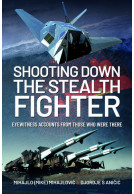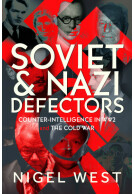Defending Putin's Empire (Hardback)
Russia’s Air Defence System
(click here for international delivery rates)
Order within the next 1 hour, 54 minutes to get your order processed the next working day!
Need a currency converter? Check XE.com for live rates
| Other formats available - Buy the Hardback and get the eBook for £1.99! | Price |
|---|---|
| Defending Putin's Empire ePub (34.0 MB) Add to Basket | £6.99 |
During the Cold War, the Soviet Union invested heavily in its air defence systems. As a result, Russia now possesses the most advanced air and ballistic missile defence systems in the world. Russian air defence systems are also highly proliferated and are currently in use by many countries.
Since the end of the Cold War and the breakup of the USSR, it has become increasingly possible to study Russian air defence, but Russia is by no means an open book on defence-related subjects. Some information circulates in the media, but for the time being, air defence systems are still subject to a degree of speculation.
Air and ballistic missile defence programs in the Soviet Union and Russia have a very long history. Soviet engineers started working on both programs in the 1950s, and by 1960 they had built the first successful systems able to intercept enemy aircraft and intermediate-range ballistic missiles.
Current Russian air defence doctrine follows a layered multi-level approach providing in depth coverage from any aerial or ballistic missile attack. This layered system allows Russian air defence forces to create zones that can be very difficult to penetrate. The highest level of these defensive networks uses long-range systems providing air defence umbrellas potentially up to 500+ km.
The second level includes medium-range systems like the S-350 and Buk variants (infamous for downing Malaysian Airline’s flight MH17 over the Ukraine in 2014). This medium-range level is intended to provide air defence zones which are also covered under the long-range systems but are more cost-effective in this envelope. The third level presents mobile short-range systems which are intended to provide extra protection for the long-range systems as well as stationary objects. These systems, along with highly mobile systems like the Buk are often also attached to ground forces formations such as armoured and mechanized divisions and brigades.
What are the abilities of these systems against NATO? President Putin emphasized the need to strengthen the country’s air defences amid NATO’s military activities near Russia’s borders. One of the key new concept developments is counter-stealth detection and interception. The other is to counter future hypersonic missile threats. It is, as the author reveals, Russia that is leading the way in these races.
“I found the book eminently readable. Mihajlović describes not only the technologies, but also the rationale behind systems development and evolution. The book is a great reference for defense-technology enthusiasts.”
The Journal of the Air Force Historical Foundation
About Mihajlo 'Mike' S. Mihajlović
MIHAJLO ‘MIKE’ S. MIHAJLOVIĆ, P.Eng, and Lieutenant Colonel ĐORĐE S. ANIČIĆ (Ret.) were both active participants of the events during NATO’s involvement in Yugoslavia.
Mike Mihajlović is a professional engineer and physicist with more than 25 years of experience. He is a specialist in military technology, in particular weapons systems, missiles, radars and camouflage. His area of specialties includes radar countermeasures and design of decoys. As a unique situation, he was member of the Yugoslav armed forces during the conflict and later, after emigrating to Canada, he was also member of the Canadian Armed Forces (officer), Electrical and Mechanical Engineers Branch, and served in Afghanistan. Mike is the author of several books and articles related to the stealth technology, radar engineering, missile engineering and similar subjects.
Rockets and Missiles Over Ukraine The Changing Face of Battle (Hardback)
In the Russian-Ukrainian war, both sides depended heavily on rockets and missiles. Some of these date from Soviet times and some are very modern, being deployed in warfare for the first time. The outbreak of the civil war in the east of Ukraine in 2014 showed that rockets and missiles, beside the artillery, are among the decisive factors in both regular Ukrainian military, and paramilitary nationalistic formations as well as in the separatists’ bodies. For eight years hardly any day passed without these weapons being fired. On 24 February 2022, Russia unleashed a ‘limited military operation’…
By Mihajlo 'Mike' S. MihajlovićClick here to buy both titles for £35.00


















